
How To Improve SEO On Dropshipping ShopBase Store
The popularity of a dropshipping business keeps growing. Already about 27% of online retailers have adopted dropshipping. It becomes more important to use every possible tool and approach to reach success when managing your dropshipping store in such a crowded market. One of the key steps to success is utilizing search engine optimization (SEO) for your business. When you’re using a ShopBase dropshipping platform, you need to overcome some specific SEO challenges compared to other typical eCommerce sites. We will discuss the SEO guideline in this article to bring in more traffic (and customers!) to your dropshipping site.
Menu:
Improving SEO – why do you need it?
SEO is often thought of as a vehicle to get free search traffic to the site. The concept of SEO has reached beyond just getting that and into more of a customer focus. SEO, when done right, helps with the following:
- Search engine visibility: this metric is for the percentage of clicks you receive approximately according to your organic ranking. First of all, if your search visibility is close to 0%, you won’t get any organic traffic; it’s that simple. In this sense, visibility is the starting goal of any SEO effort. On the other hand, when customers search for goods you sell and see you among the top 10 search results, they learn about you. They may not even click on your page right now, but it will help brand awareness; they may remember you for some future needs, or they may constantly bump into your page when searching for different products and think you’re worth checking out.
- Traffic: the ultimate goal and purpose of SEO efforts are to get organic traffic coming to your website. Traffic is the fuel for conversions, especially since it is traffic from search results and specific keywords so that it can be very hot – that is, users coming from the SERP are closer to making a purchase.
- Conversions: After traffic starts to come in, if the user intent and the content of the page match, it ranks well and offers what the user needs, and you get higher conversions.
How to improve SEO on dropshipping store
When you run a site on a dropshipping platform like ShopBase, SEO may be considered practically out of your control. You may not be able to create your own sitemap.xml or have access to robots.txt, but still, there will be many SEO aspects you manage, and they work wonders when done right. Below are the steps to improve the SEO of your dropshipping website.
Competition research
A great starting point for search engine optimization is to have a look at your competition. After all, you will attempt to sell the same or similar products to customers, and it is important to understand what you’re competing against.
1. Find out who your competition is
There are many ways to do that:
- Google search;
- eBay search;
- Amazon search;
- Specialized tools.
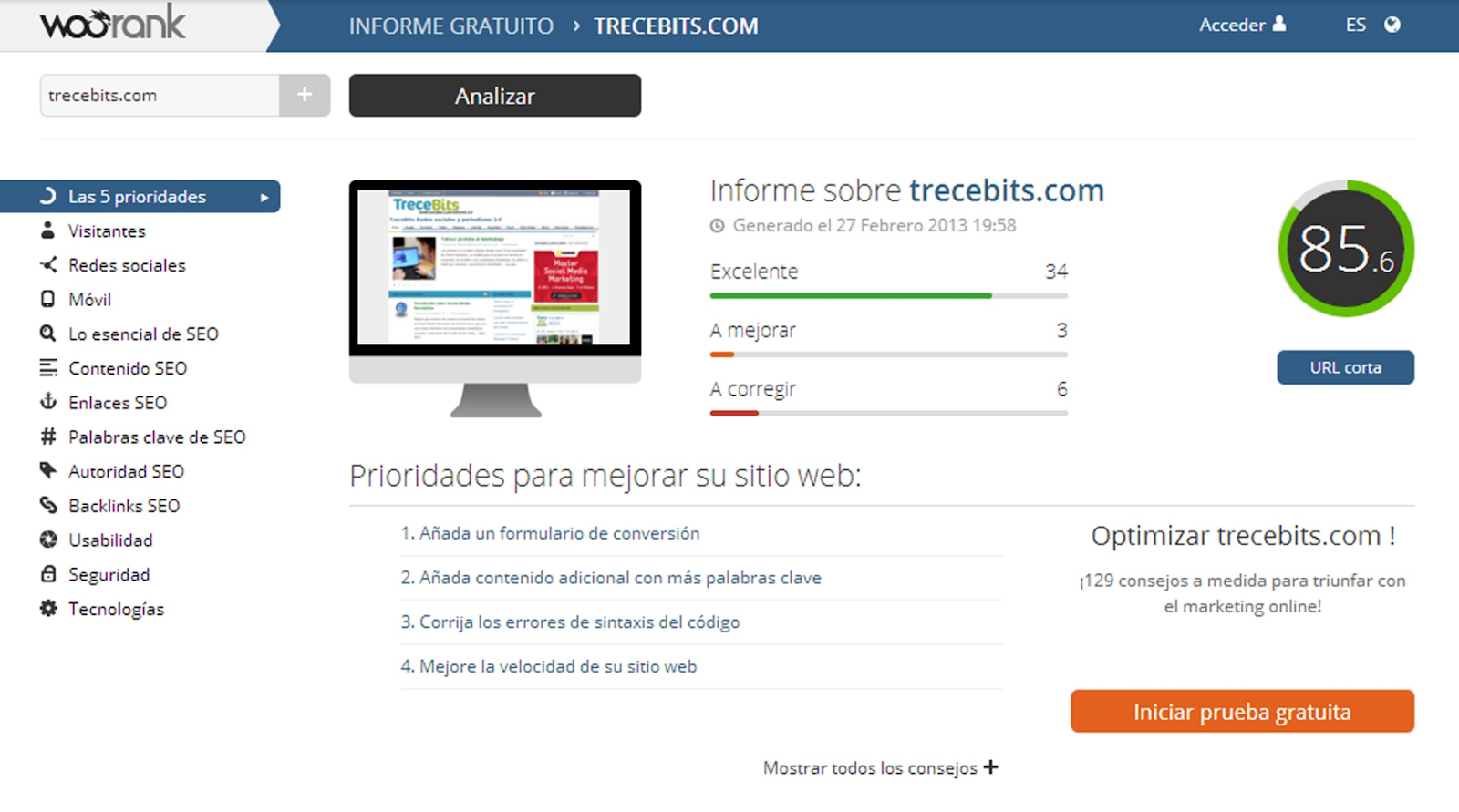
Image source: tracebites.com
2. Browse through their websites
Try to identify the following:
- Their positioning – how do they present themselves: best price guarantee, Superior product/service, or else?
- Their value propositions.
- Their supportive tactics – what do they do to warm up the audience and keep them engaged? Do they use email marketing, offer deals, etc.?
3. Check the reviews
Try to look them up on review sites or just Google something like ‘[your competitor] review’ and check the results. Try to understand overall public sentiments towards them, write down specific problems that the customers report on them most often, and praise them.
4. Their SEO efforts
Try googling them at the very least or use specialized tools – you will see what keywords your competition is ranked for, what pages rank well, and how much traffic they’re getting, both free and paid.
You should also look at their successful pages, check their titles/headlines/descriptions and page content, trying to understand what helped them rank so high.
5. Summarize the conclusions
One of the best ways to get it all together is the so-called SWOT analysis, consisting of:
- Strengths – what your company/product inner qualities are making it superior to the competition;
- Weaknesses – where you’re behind the competition;
- Opportunities – external or market trends or other factors which you may turn into your strengths in time;
- Threats – external factors which can turn into your weaknesses if you don’t react.

Image source: venngage.com
Keywords research
Now that you know what keywords your competition is using and have some ideas for your keywords, you can get on to comprehensive keyword research.
Conduct automated SEO keyword research, so you don’t miss important insights. With SEO tools like SE Ranking, you will get lots of keyword suggestions based on the keywords you enter, and most importantly – the underused and overlooked ones you can use to increase traffic and conversions.

Image source: Screenshot
When picking the right keywords, check the following:
- User intent: or how close the user is to purchasing. For example, ‘men’s clothing’ can be a very generalized keyword with no specific intent (it can be both informational and commercial). But something like ‘black t-shirt for men with hard rock print discounts’ is much closer to the commercial intent.
- Mid- and long-tail keywords: these are the keywords that are not so popular in the search for goods that you might be selling. However, they’re the typical sweet spot to compete for because it would be easier to rank high with them.
- Short-tail keywords: these are usually high-volume search keywords, and typically, it will be tough to rank with them. However, it is worth checking if some of them might have low keyword difficulty.
The popular and high-volume keywords like ‘buy cowboys boots’ are tough to make effective for your dropshipping site ranking, but something rarer like ‘red and white cowboy boots’ can be quite doable. Have a look at the so-called ‘keyword difficulty’ in the keyword research tool. Ranking on high search volume keywords with difficulty index higher than 50 will be very complicated without getting quality backlinks, but still possible.
When you understand the list of keywords you aim for, you can use them in the relevant parts of your landing pages/product pages/category pages: page titles; meta descriptions; ALT tags for the images you use; page’s body content. But be careful not to have duplicate or seemingly duplicate content on several pages like your main product and the category page the product is in.
Page tags
When you have just a handful of goods, you can easily handpick titles/descriptions and tags for them. When you have hundreds of goods to sell, this becomes a problem.
Many website builders, eCommerce platforms, or plugins offer you a way to automate H1-H6, title, and description tag creation using special ‘variables’ so you don’t have to fill them in manually every time.
So instead of having to enter your Н1 tag like ‘New Balance 574 Trainers’ and then ‘Puma XS 7000 Rudolf Dassler Legacy Formstrip Trainers’ every time and doing it multiple times for all your products, you can put in something like this (the syntax may vary but you’ll get the point) – ‘{brand} {product name} {category name},’ calling it a day.
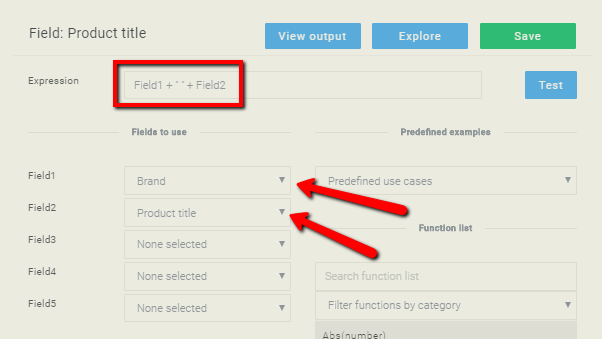
Image source: wakeupdata.com
As for the title and description tags, they may show up on the search result pages, and thus you have to make them keyword-relevant but also encouraging enough to get clicks on the results. There will be a lot of experimenting involved, and remember to keep them at bay with length: under 55 characters for the title and under 160 characters for the description tag.
Also, make sure that automated tags do not create duplicate tags on different pages. This will cause problems for ranking as it would make it harder for them to judge, which is the best result for your targeted keyword if the tags on them are the same and seem like a great match for that keyword.
Optimizing images
Images take a heavy toll on page loading speed. Ensure the images you upload as product images or the images you use within product pages are optimized not to cause visual deterioration.
Alt tags for the images are also an important part of SEO. Make sure they contain the keyword you’re aiming for. Depending on the platform you use, there may be options to automate that, either with a built-in tool or external plugins. For example, the Bialty plugin does it for Woocommerce shops.
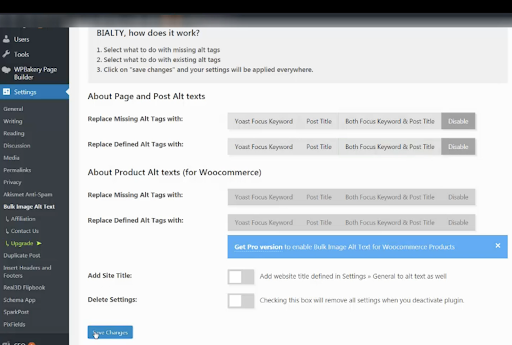
Image source: Screenshot
Cross-linking between pages
Crosslinks are the links to other pages of your website with relevant content to the keyword they’re linked to. Crosslinks improve the authority of your pages and help visitors reach relevant content. It also helps to improve the ranking of the pages. When setting up the crosslinks on the site, we suggest the following structure:
- Identify long-tail keywords: these are typically more detailed and therefore rarer keywords, giving a better probability to rank higher with them.
- Make landing pages based on such keywords: you can offer a checklist, PDF guide, or any other lead magnet, but it should be relevant to the keyword you’re promoting. Include a lead capture form on that page as well.
- Link popular pages to those landing pages: set up links from the most viewed pages.
- Include keywords in hyperlinks: don’t link with anchor text like ‘click here to download.’ Use long-tail keywords instead.
Page cannibalization
Cannibalization is when several pages from the same site compete (usually, without such intention) for the same keyword.
For example, you can have a page for ‘Men’s Trainers New Balance 574 – Red’ and another page for ‘Men’s Trainers New Balance 574 – White’. Google will have a hard time deciding which of those pages is a better match for ‘New balance trainers 574’ keywords. It may try ranking each of those or keep switching them. This typically spoils getting the best possible rank.
Keep just one page for similar products of different sizes and colors or other product features like dioptres for contact lenses. Do not duplicate product pages for each variation of such parameters for the same product model.
Logical navigation
Search engines are a bit simplistic in their expectations from the sites they index. If they understand that the site is an online store, they expect it to have pages for different categories, and they hope to see all the products from the category on each category page.
One of the common ways to confuse search engines (and cause trouble with ranking) is the so-called infinite scroll – when products are loading as the user scrolls deeper and deeper.
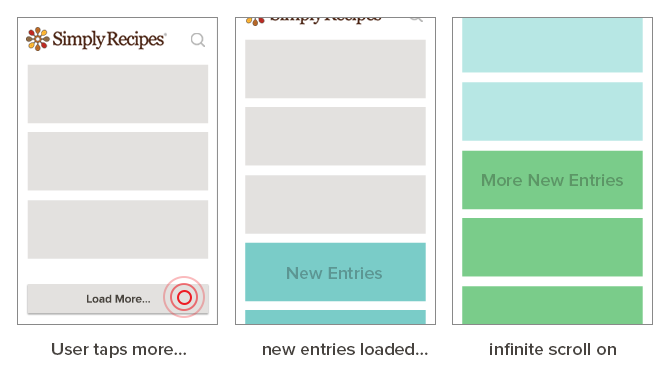
Image source: plasticmind.com
Consider your page for, say, polo shirts having five shirts on the page and more as the user scrolls, but the website crawlers don’t scroll, so they think it has only five polo shirts. Now consider the same page from your competitor having 25 shirts. Which do you think will rank higher given every other aspect is equal?
There is no correct answer to how to handle this. You need to balance how many products you show on such a page initially and how fast it loads.
As for helping index infinite scroll category pages, try one of the following solutions:
- Make sure the pagination portion of the URL is added automatically when the visitors scroll down.
- Use prev/next tags in the page’s head section to ‘tell’ the search engines there is pagination.
- Make a ‘view all’ page and tag it as canonical, but it may not work if there will be too many products on that page, thus deeming it as slow loading.
Seasonal product refreshes
One of the common pitfalls for dropshipping stores with seasonal products is that they often remove or deactivate pages for the season, which is now off and create new pages for new seasonal products. While it may seem logical in the human sense that you may not want wool coats in your store in summer, from an SEO perspective, and for search engines, it looks like you completely migrate your products from one set of pages to the other.
This will cause a massive loss in rankings of any out-of-season products gained when they were popular. Avoid this by keeping them alive; don’t delete those product pages. You may set them out of stock if your platform allows, but it will have the pages in place and keep ranking for those keywords.
For example, though it’s the middle of summer now, you can still easily find fur hats on Amazon:
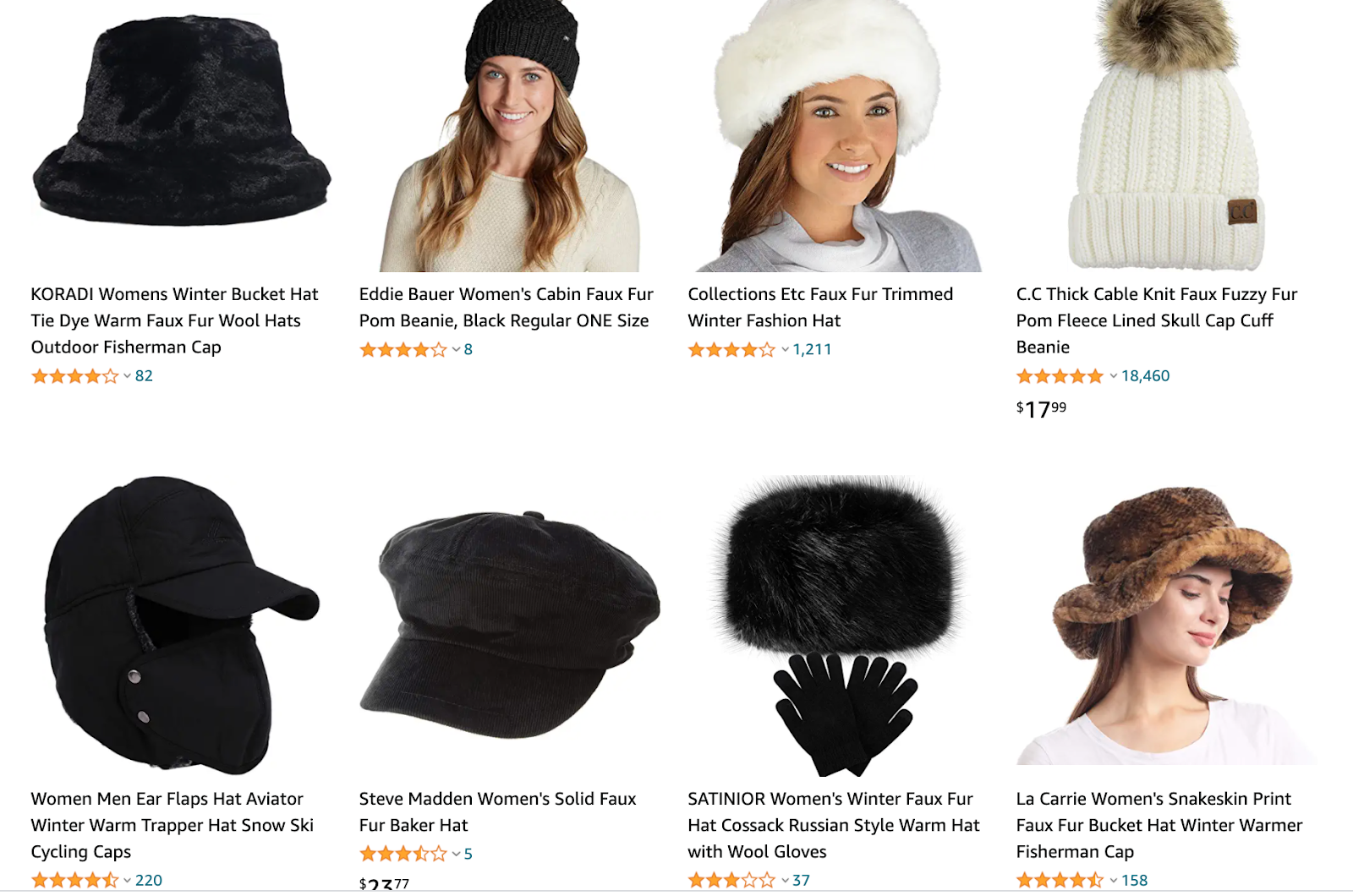
Image source: Screenshot
Also, one of the URL tricks for better ranking, you could have tried to mention the year in the URL of the product. For example, setting the URL to ‘faux-fur-hat-fall-winter-2021’ is a bad idea. There could be people looking for a faux fur hat for winter 2021 indeed, and it could help get ranking for those, but 2021 will pass, and the URL will have to be updated causing troubles for backlinks, needing to set up redirects, etc.
Summary
Running SEO for a dropshipping site isn’t an easy feat but still completely doable. Many successful dropshipping sites have done it right. Great content, logical navigation, proper tags, and other advice from this article are doing SEO wonders and are fully actionable to help you succeed in the tough dropshipping arena.
This post is brought to you by Diana Ford – Digital Marketing Specialist with 10+ years of experience. Diana loves blogging and shares her expertise regarding digital trends, marketing techniques, search optimization, and business strategies.